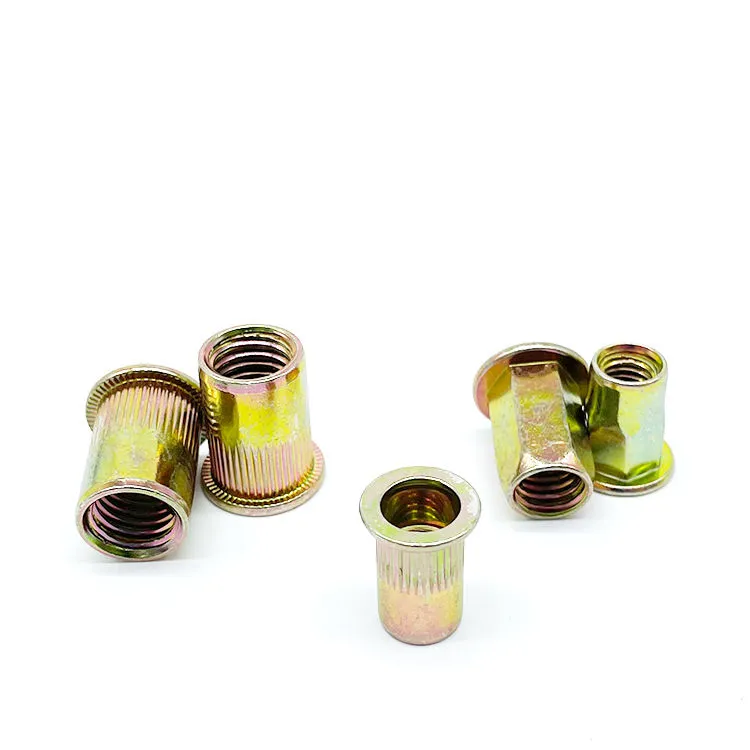

self tapping metal to wood screws
نوفمبر . 22, 2024 07:20 Back to list
self tapping metal to wood screws
Understanding Self-Tapping Metal to Wood Screws
Self-tapping screws have revolutionized the way we approach fastening in construction and woodworking. This versatile fastener type is designed to create its own hole in metal when driven into it, but they also find a place in woodworking applications. In this article, we will explore the characteristics, benefits, and applications of self-tapping screws designed for use with metals and woods, as well as their proper usage.
What Are Self-Tapping Screws?
Self-tapping screws feature a unique design that allows them to tap their own threads when driven into a material. Unlike traditional screws, which require a pre-drilled hole, self-tapping screws can penetrate materials such as metal and wood directly, making them efficient and saving time in assembly processes. They typically have a sharp point that facilitates easy entry into the material. When it comes to self-tapping screws that can be used for metal to wood applications, these screws are often made from harder materials to enable them to penetrate metal and are designed to hold securely when fastening two dissimilar materials.
Advantages of Self-Tapping Screws
1. Time Efficiency As mentioned, one of the primary benefits of self-tapping screws is their ability to eliminate the need for pre-drilling holes. This not only speeds up the installation process but also makes the task easier for DIY enthusiasts and professionals alike.
2. Versatility Self-tapping screws can be used in various applications, from automotive and machinery assembly to woodworking projects. Their adaptability to different materials makes them an essential tool in any craftsman’s toolkit.
3. Strong Hold These screws provide a robust grip even in less-than-ideal conditions. When using self-tapping screws to connect metal and wood, the screws create a more secure connection than traditional fasteners, which can be prone to loosening over time.
4. Reduced Material Damage Because self-tapping screws create their own threads, there is less risk of splitting the wood compared to using larger screws that demand pre-drilled holes.
Applications in Metal to Wood Projects
self tapping metal to wood screws

Self-tapping screws are commonly used in projects where metal components are fastened to wooden structures. Some practical applications include
- Furniture Assembly Metal brackets or legs are often attached to wooden frames using self-tapping screws, providing both stability and style. - Outdoor Structures When securing metal roofing or siding to wooden frames, self-tapping screws ensure a tight fit that can withstand the elements. - Manufacturing In manufacturing settings, self-tapping screws can be used to join metal parts to wooden bases for tools and equipment.
Proper Usage Tips
To maximize the effectiveness of self-tapping screws, consider the following tips
1. Choose the Right Screw For metal to wood applications, select screws that have a fine thread for wood and a sharp point designed to penetrate metal.
2. Use a Power Drill Using a power drill with the appropriate torque setting can help drive the screw more efficiently, especially in dense or hard materials.
3. Pilot Holes for Hardwoods While self-tapping screws do not typically require pilot holes, drilling a small pilot hole in hardwood can reduce the risk of splitting.
4. Check Compatibility Always ensure that the screws are compatible with both materials to avoid issues such as corrosion over time, which can be a concern when combining different metals and woods.
In conclusion, self-tapping metal to wood screws are invaluable fasteners in various applications, offering speed, versatility, and a strong hold. By understanding their characteristics and proper usage, you can enhance your woodworking and metalworking projects effectively. Whether you're a seasoned professional or a DIY beginner, incorporating self-tapping screws into your toolkit will undoubtedly streamline your work and improve results.
Latest news
-
Premium Fasteners Manufacturer | AI-Driven Solutions
NewsAug.01,2025
-
Hot Dip Galvanized Bolts - Hebei Longze | High Strength, Corrosion Resistance
NewsAug.01,2025
-
High-Strength Hot Dip Galvanized Bolts - LongZe | Corrosion Resistance, Custom Sizes
NewsAug.01,2025
-
Best Self Tapping Screws for Drywall - Fast & Secure Installation
NewsJul.31,2025
-
High-Strength Hot Dip Galvanized Bolts-Hebei Longze|Corrosion Resistance&Customization
NewsJul.31,2025
-
Hot Dip Galvanized Bolts-Hebei Longze Metal Products|Corrosion Resistance&High Strength
NewsJul.31,2025

